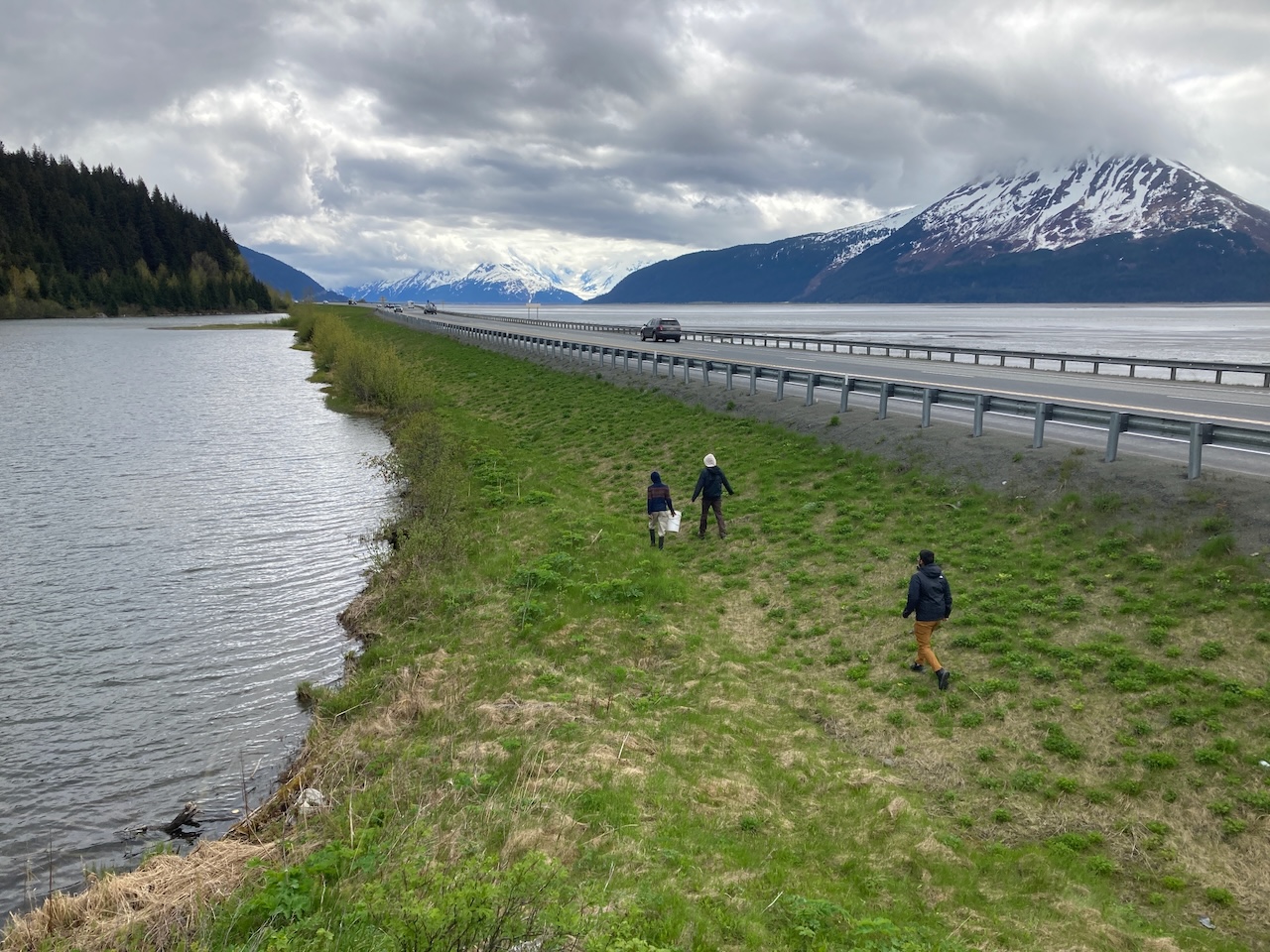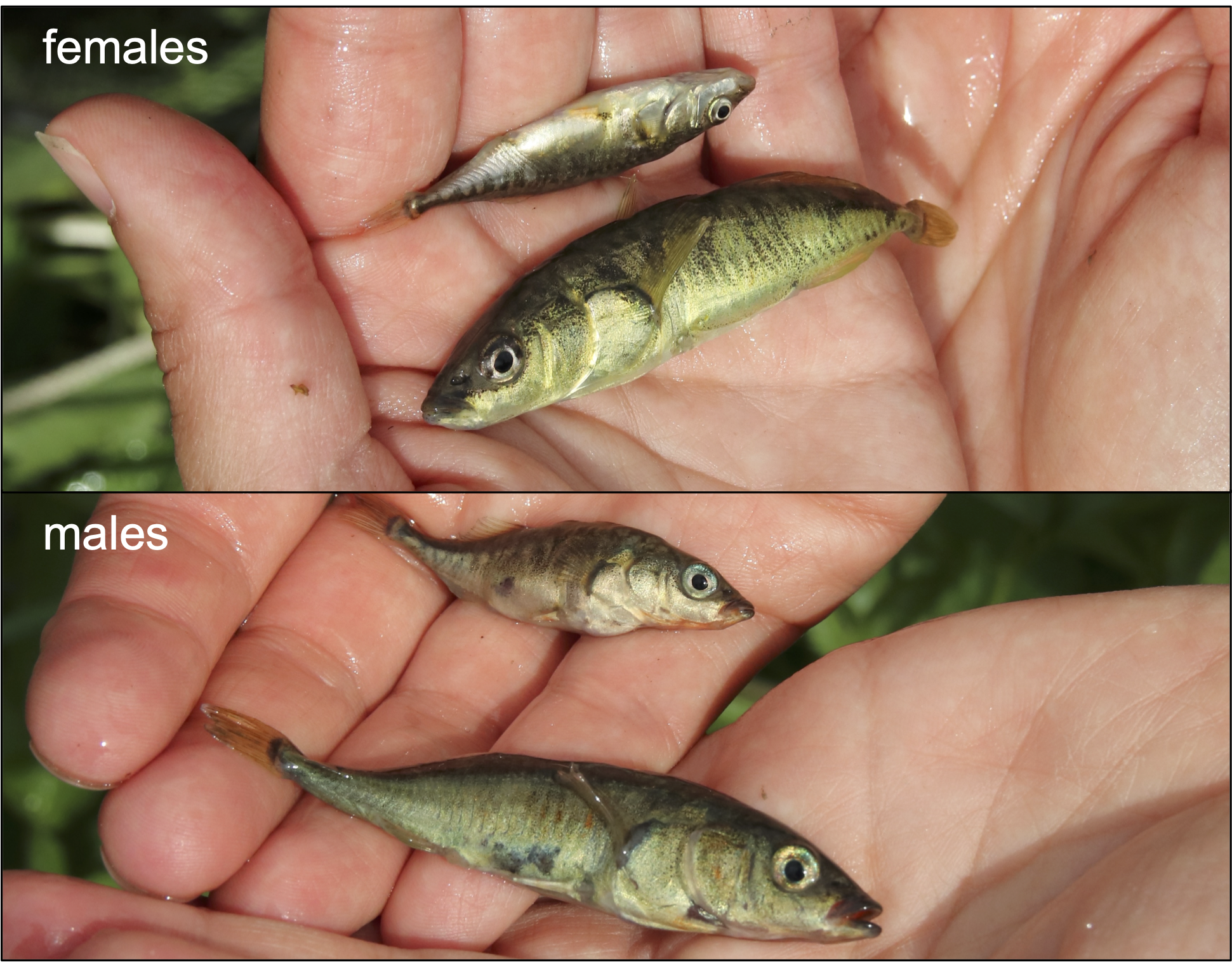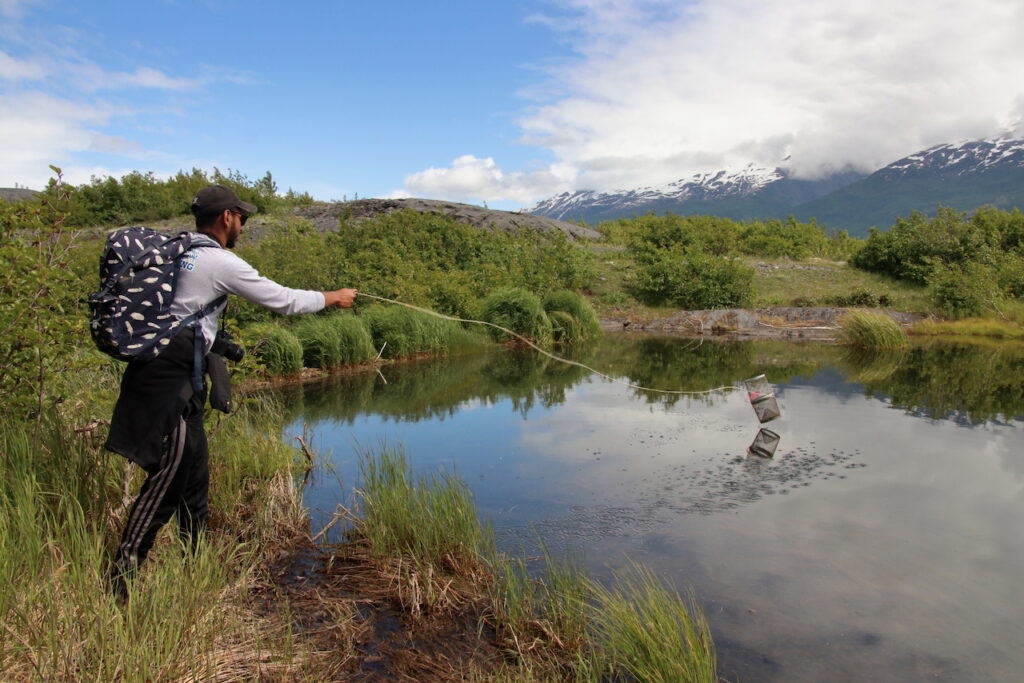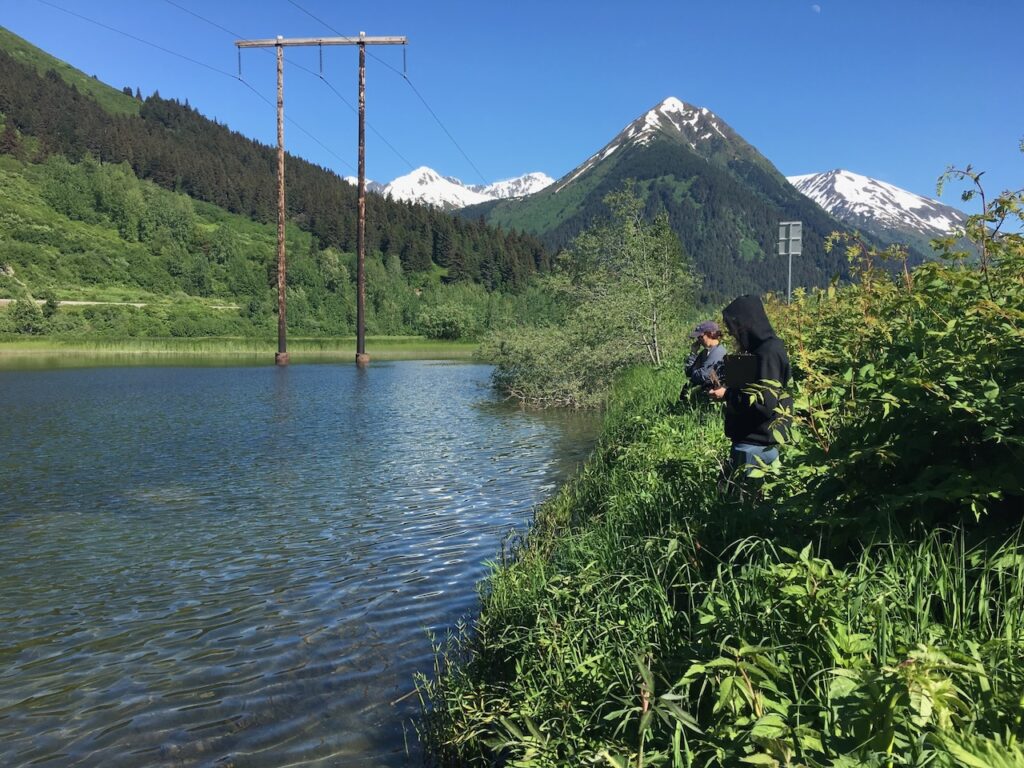
Phenotypic Plasticity and Reproductive Isolation in Recently-established Stickleback Populations
In collaboration with Dr. Krishna Veeramah and his team at Stony Brook University, we are investigating the role of phenotypic plasticity, differential migration, and mate choice in diverging pairs of anadromous and resident-freshwater stickleback populations. This work is funded by the National Science Foundation (DEB-2422021; DEB-2422022). Theory predicts that phenotypic plasticity can promote adaptive divergence and speciation when individuals select different habitats, leading to plastic divergence in morphology that is subsequently the basis for mate choice. We are testing this model using four recently-established freshwater populations of stickleback fish that occur in Alaskan lakes that formed following the construction of a coastal highway. Each lake is connected to the nearby ocean via a single culvert, which allows migration between the lake and ocean at high tides. During the breeding season, these lakes contain both migratory anadromous stickleback and much smaller, freshwater residents that have recently descended from the anadromous migrants. We propose that phenotypic plasticity in body size leads to size-assortative mating between the two forms, which facilitates the rapid formation and eventual maintenance of genomically-divergent ecotypes. We are using a combination of field observations, mate preference experiments, and genomic analyses to determine the phenotypic and genomic profile of resident versus migratory individuals, as well as the role that body size plasticity and other phenotypic characters play in mate choice. Using these approaches, we can test a variety of models of how plasticity, mate choice, and migratory patterns throughout the stickleback life cycle impact adaptive divergence between the two ecotypes.



Phenotypic Plasticity and Parallel, Adaptive Evolution
We have used a series of experiments to examine the role of ancestral plasticity in the repeated evolution of benthic and limnetic ecotypes in stickleback fish. In her landmark book Developmental Plasticity and Evolution (2003), Mary Jane West-Eberhard proposed the flexible stem hypothesis, whereby a phenotypically plastic ancestor repeatedly colonizes alternative habitats and expresses the same set of alternate forms to natural selection. Through the process of genetic accommodation, these initially plastic responses are refined by natural selection, resulting in a replicate adaptive radiation. West-Eberhard specifically cited the threespine stickleback radiation as a potential example of this process. Our work has demonstrated that diet- and habitat-induced plasticity in trophic morphology and body shape leads to phenotypes resembling divergent ecotypes, consistent with the flexible stem hypothesis. This plasticity is present in both marine stickleback, which represent the ancestral state of the radiation, as well as derived, freshwater populations. We are expanding this project to experimentally address whether the plasticity we have observed confers an adaptive advantage in each derived habitat, which would indicate that alternate forms would be favored by natural selection in their respective environments.

The Evolution and Development of Anti-predator Behavior in Response to Introduced Predators
Throughout their range, threespine stickleback experience a variety of predator assemblages, including the loss of some predators relative to their marine ancestors, as well as the introduction of predators when lakes are stocked with game fish. We have shown that anti-predator behavior varies predictably with the presence of predatory fish, and that a combination of learned and genetic mechanisms accounts for this variation. When predator fish are historically absent from a lake, stickleback evolve reduced fear responses when initially re-exposed to those predators. When predatory fish are introduced for sport fishing, stickleback quickly evolve heightened fear responses that are similar to stickleback in lakes where predatory fish are native. These differences are maintained even in naive, laboratory-reared fish. However, fish raised in the lab have reduced fear responses overall, indicating a role for learning as well as evolved, genetic variation in behavior.


